Christian Ilzer’s impact on Sturm Graz has been nothing short of transformative. His tactical approach emphasizes aggressive pressing, quick transitions, and a highly structured defense, all of which have propelled Sturm Graz to new heights in the Austrian Bundesliga. By blending a modern attacking style with a solid defensive foundation, Ilzer has crafted a team that is both entertaining to watch and difficult to beat. This tactical analysis dives into the key strategies and formations that define Sturm Graz under Ilzer’s leadership, showcasing how his vision is shaping the team’s success on the pitch.
Build-up
In the build-up, Ilzer usually sets his team up in a 1-4-3-3 formation, with a back four, one number-six, two number-eights, and a front three.
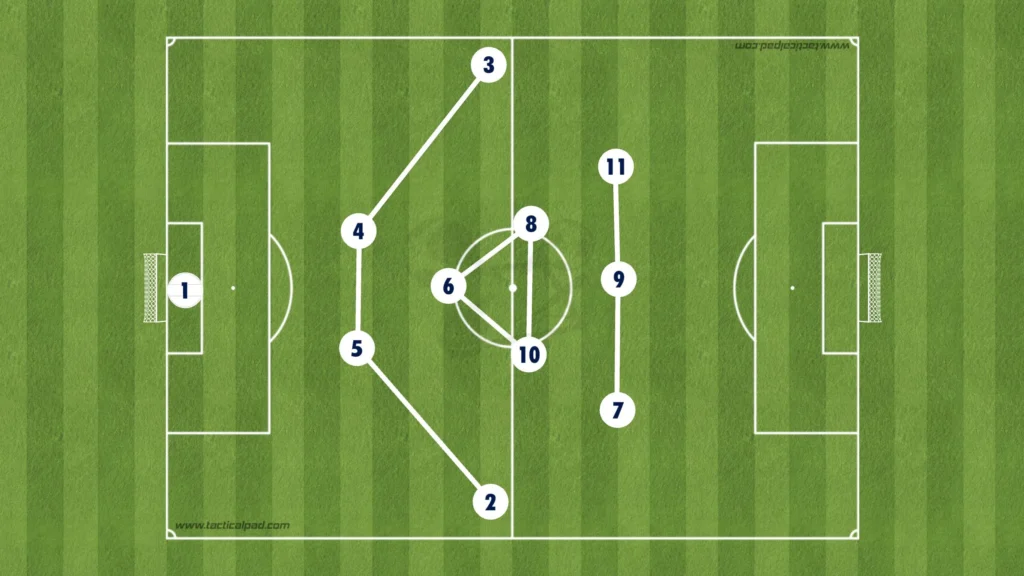

Building up in a 1-4-3-3 formation focuses on creating a solid foundation at the back while maintaining fluidity and options in the midfield. The formation begins with four defenders, who provide width and stability, allowing for controlled possession from deep areas. The single defensive midfielder connects the defense to the midfield, dictating the tempo and distributing the ball to the two more advanced central midfielders. These midfielders position themselves to exploit spaces between the opposition’s lines, creating passing triangles that facilitate smooth progression up the pitch. The three forwards, with the central striker as the focal point, are always ready to receive the ball, either through direct passes or by making runs behind the defense. This setup allows the team to transition quickly from attack to defense, maintaining pressure on the opponent while ensuring defensive coverage.
Wingers Inverting
Sturm Graz’s wingers play a key role in Christian Ilzer’s tactical setup by frequently inverting, which adds a unique layer of fluidity to their attack. Rather than staying wide, they come inside to occupy the half-spaces, positioning themselves between the opposition’s full-backs and center-backs. This movement pulls defenders out of position, opening up central areas for quick passing combinations and creating space for overlapping full-backs on the outside. By inverting, the wingers also provide additional support in the middle of the field, allowing Sturm Graz to maintain numerical superiority and control in central zones.
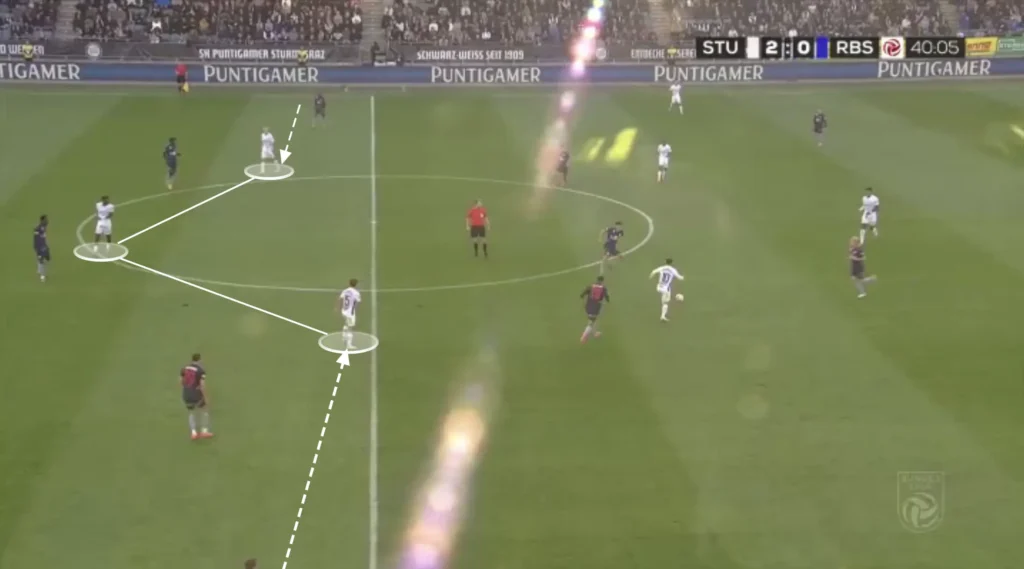
Fullbacks Pushing up
When the wingers drift inside to occupy central spaces, the fullbacks are encouraged to push up high and wide. This movement stretches the opposition defense, opening up passing lanes and creating opportunities for crosses from the flanks. By positioning the fullbacks in advanced areas, Sturm Graz maintains width in the attack, allowing the central players to work in tighter spaces while the fullbacks are ready to support the offensive play or quickly drop back in transition. This tactic not only adds depth to their attacking options but also helps Sturm Graz apply pressure in the opponent’s half, enhancing their high-intensity, forward-driven style.
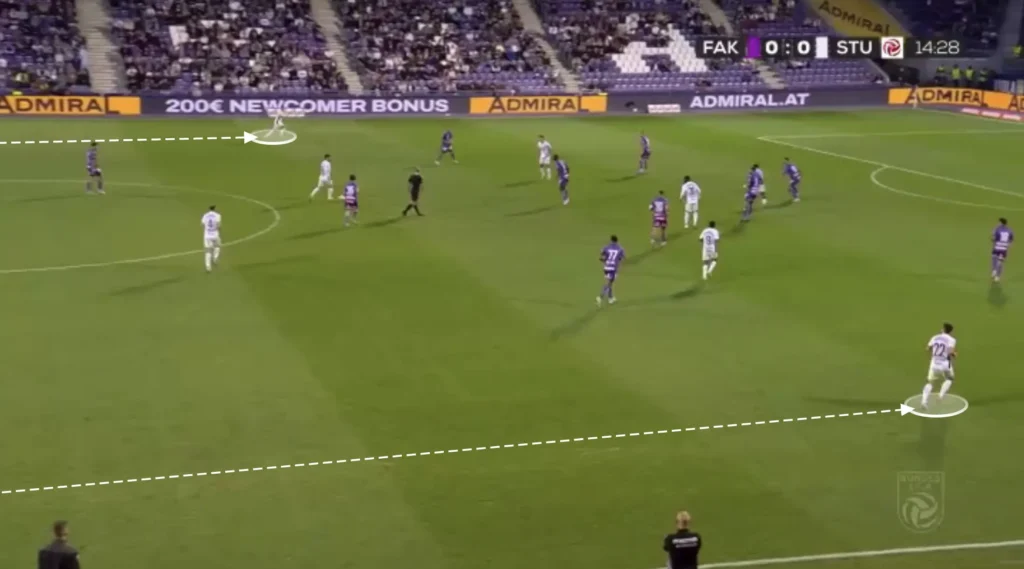
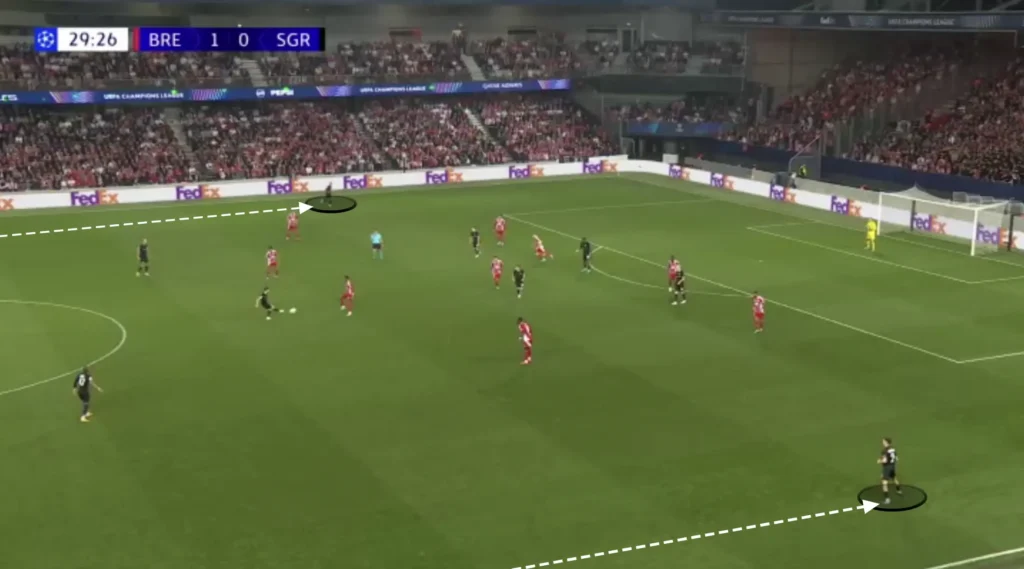
Sturm Graz often utilizes long switches of play from their midfielders to find their fullbacks in these advanced positions on the flanks. This tactic stretches the opposition, forcing defenders to shift quickly across the pitch and leaving gaps that Sturm Graz can exploit. These long diagonal balls not only allow for rapid transitions but also disrupt the defensive shape of their opponents, giving Sturm Graz an effective method to progress the ball into dangerous areas.
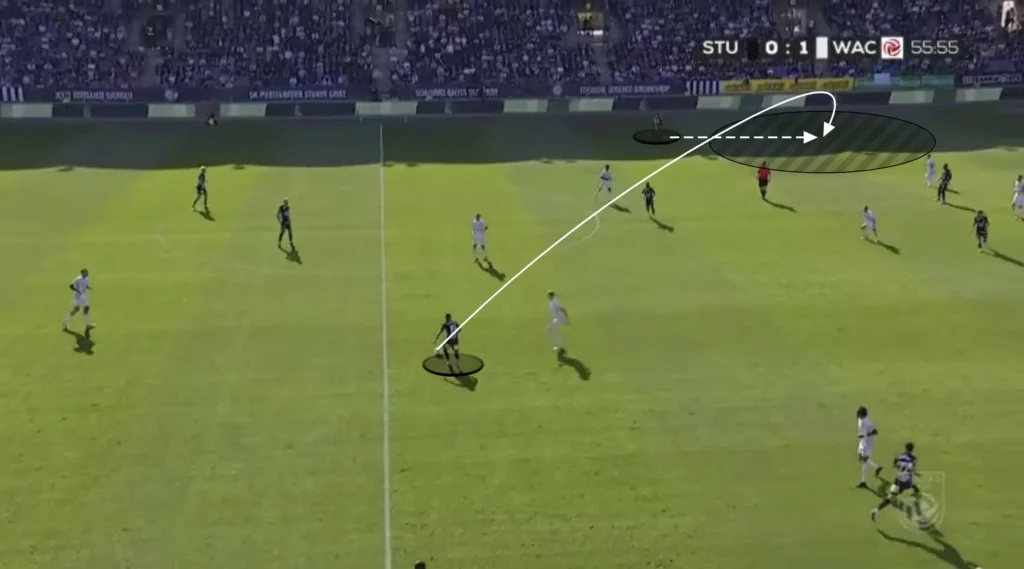
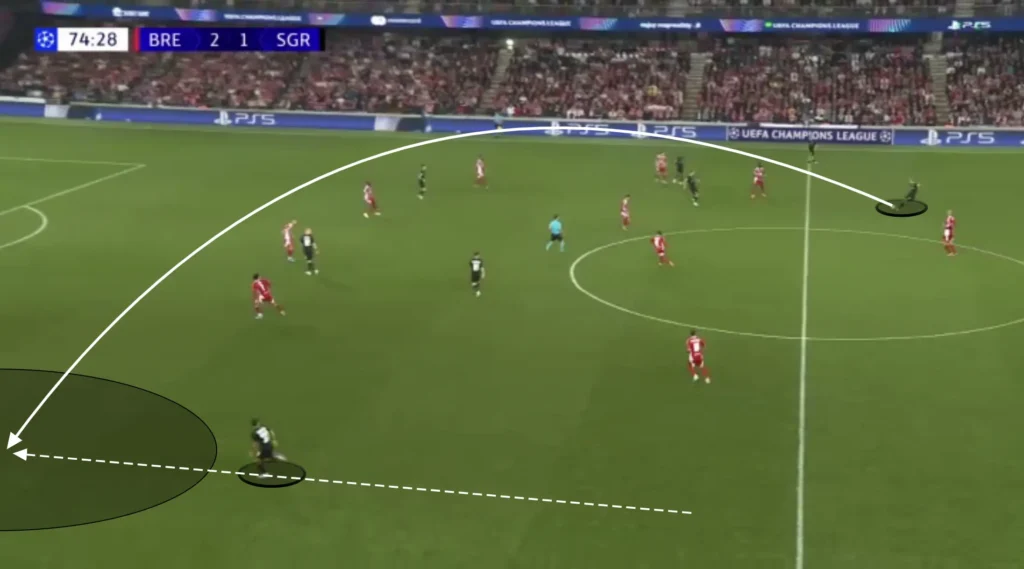
Rotations and Fluidity
The Sturm Graz players constantly rotate during the build-up. The team adopts a dynamic approach, shifting between formations to create numerical advantages and exploit spaces. Ilzer’s focus is always to get the players into their best positions, where they can make the most out of their individual skills. He emphasizes versatility, with players interchanging positions seamlessly to maintain possession and disrupt the opposition’s defensive structure. This flexibility creates numerical superiorities in different areas, allowing Sturm Graz to bypass the opposition’s press while maintaining control.
Ilzer will, for example, often drop down a central midfielder next to the center-backs. This shift creates a back three, allowing Sturm Graz to maintain defensive stability while gaining more control in possession.
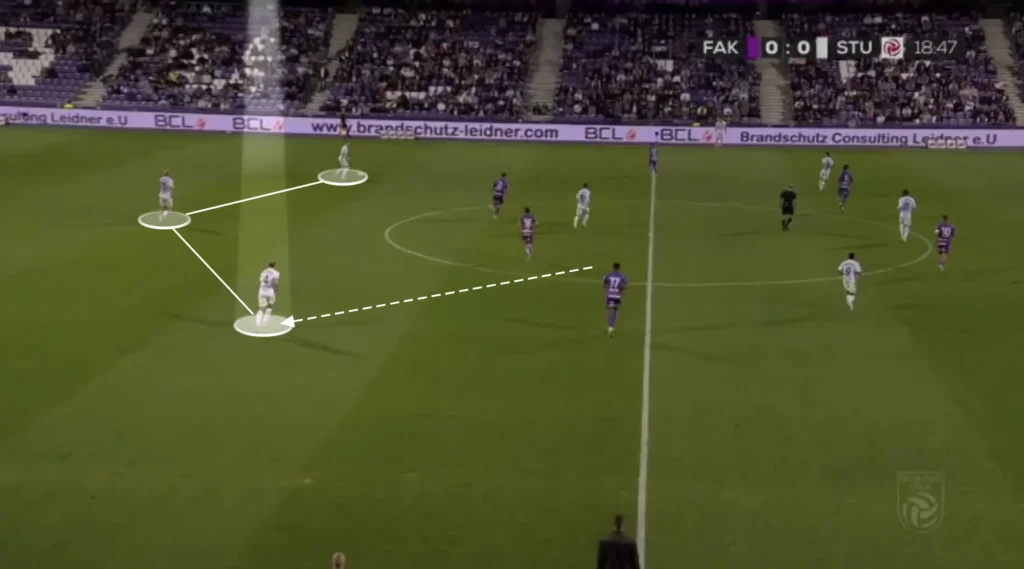
By doing this, Sturm Graz not only widen the field but also open up different angles for passing, making it easier to beat the opposition’s press.
Christian Ilzer has also used different formations than the 1-4-3-3 in the build-up. They have, for example, used a 1-4-2-3-1 formation, still inverting the wingers into the midfield.
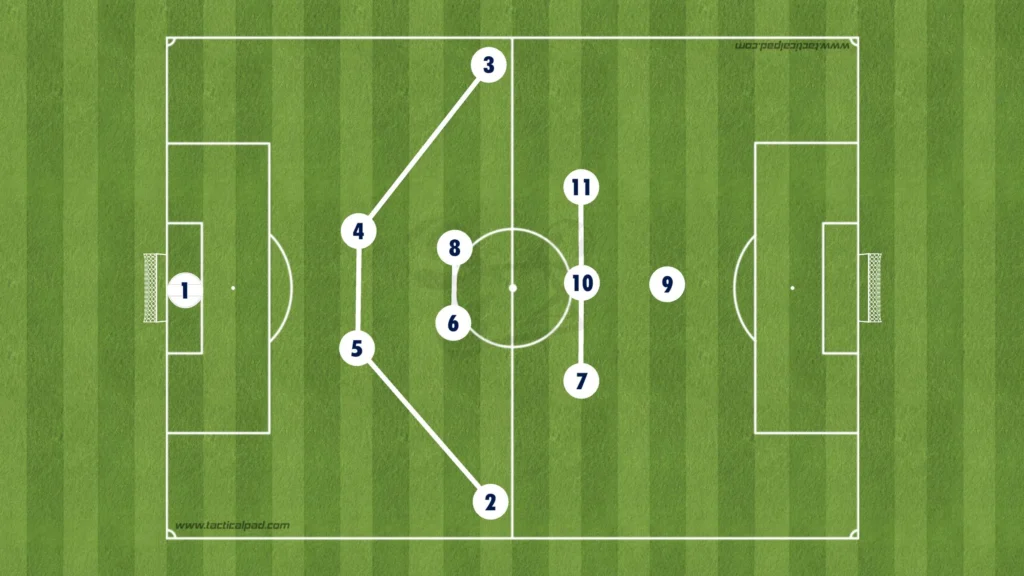
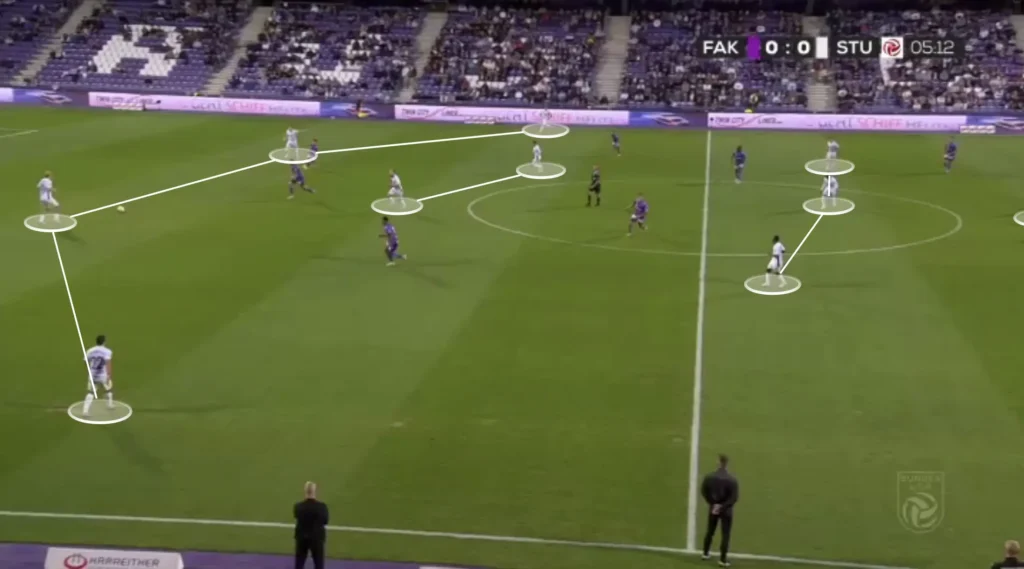
They have also used a 1-4-1-2-1-2 formation.
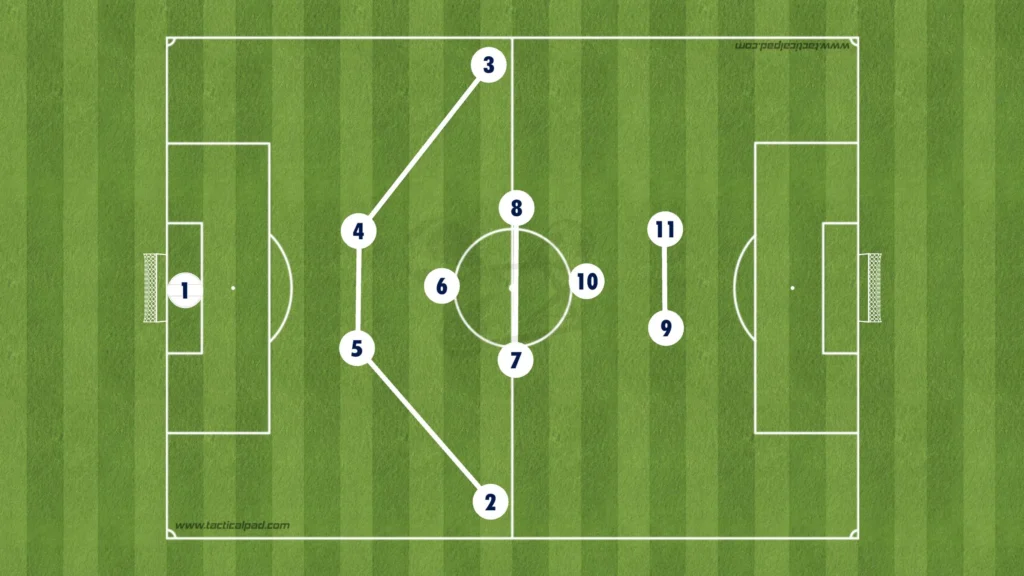

While it demands a lot of technical and tactical skills from the players, this fluidity has created new dynamics for Sturm Graz’s attacking style, offering new solutions and ways of beating the opposition’s press. It enhances their ability to control the game while opening up opportunities for incisive passes and creative plays.
Numerical Advantage in the Midfield
Sturm Graz will always have many players in the center, regardless of the formation. Ilzer wants to have the fullbacks wide and positions the remaining eight players in the middle.
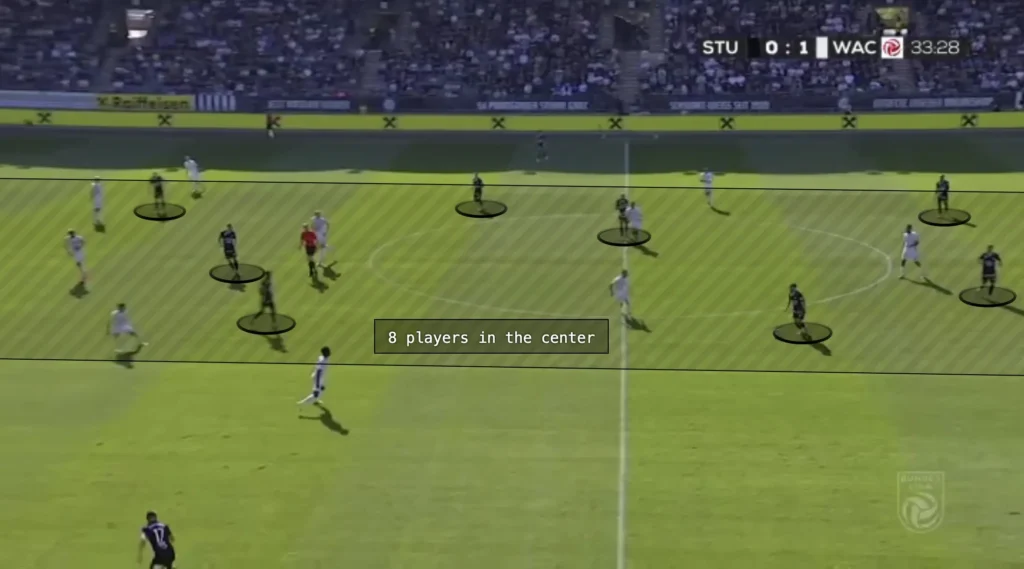
Having only two players out wide and the rest in the middle creates more options in the center and less space between the players. Ilzer likes this because he prioritizes playing through the middle. He needs one player out wide to pull the opposition apart while the rest create numerical advantages in the midfield areas. When a team outnumbers the opposition in the midfield, it can more easily retain the ball, exploit spaces, and progress the ball through the center. Sturm Graz will often progress the ball through quick central passes between the midfielders, beating the opposition’s press and exploiting gaps in the defense. At the same time, having many players centrally builds good conditions in defensive transitions since it allows more players to counterpress when they lose the ball.
Another purpose for keeping many players in the middle is to shorten the distance between them. This shortens the length of the passes, which naturally shortens the time between passes. This means the opposition players will have less time to push up and press, giving the Graz players more time and control.
Rest-Defence
Ilzer also wants many players close to the center to create a good rest-defence structure. A good rest-defence structure is crucial for maintaining balance and preventing counterattacks when the team is in possession. Having many players in the middle builds good conditions in defensive transitions, allowing more players to counterpress when losing the ball. The center-backs and central midfielders form the core of the rest-defence, as they are well-positioned to deal with any potential loss of the ball. When losing possession, the four or five Graz players closest will immediately jump on the opposition player with the ball and close the distance to cut off any passing lanes. This approach disrupts the opponent’s transition from defense to attack, forcing errors and creating opportunities to regain control of the ball.
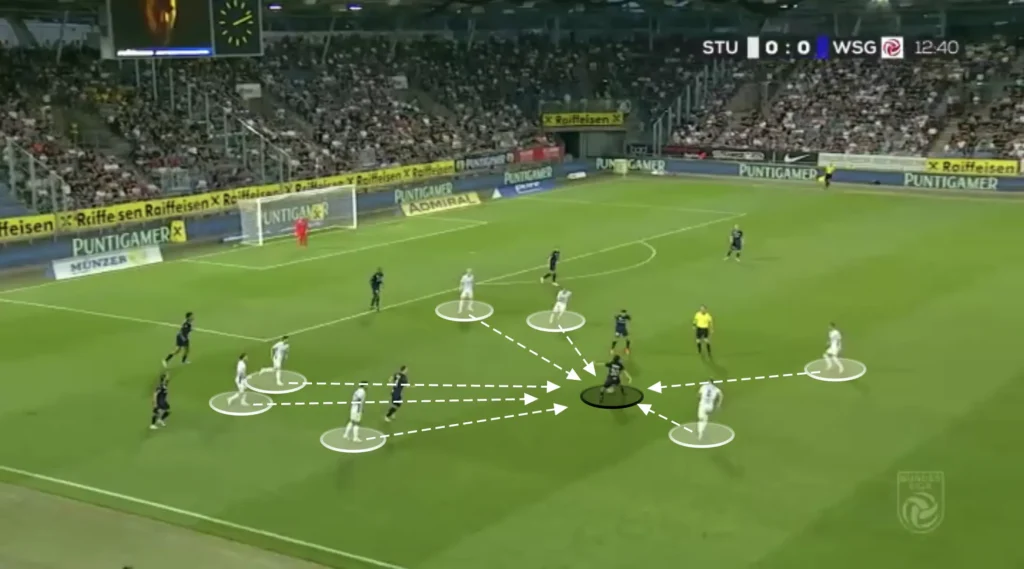
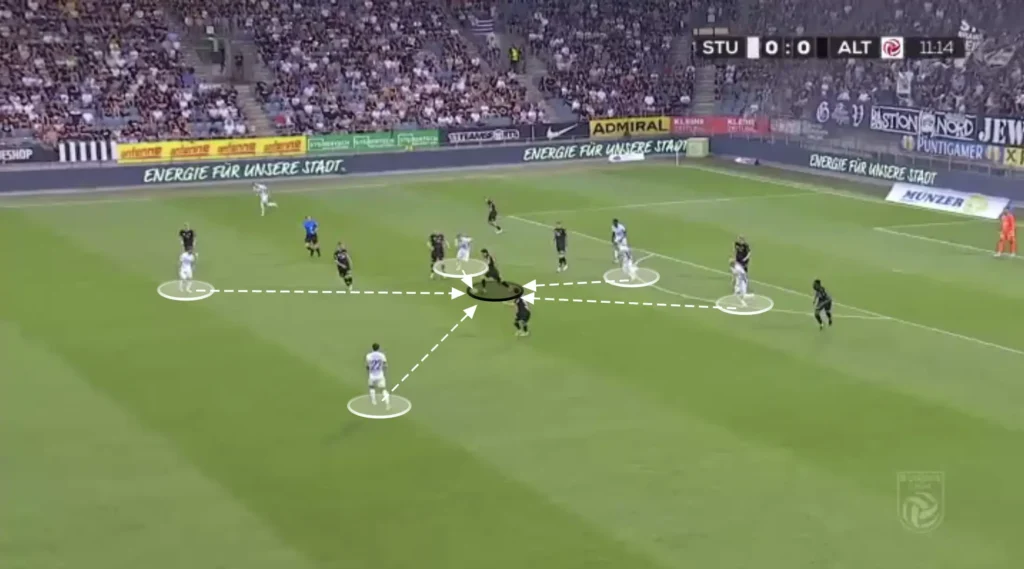
Counterpressing like this keeps Sturm Graz on the front foot, allowing them to dominate possession and create more scoring opportunities. However, it requires exceptional fitness, tactical discipline, and teamwork.
Direct
Sturm Graz, under Christian Ilzer, showcases a highly direct approach in their build-up play, aiming to advance the ball up the field quickly and decisively. Rather than relying on intricate passing sequences, they often seek long vertical passes to exploit spaces behind the opponent’s defensive lines. This approach is particularly effective for Sturm Graz due to their well-drilled positioning and ability to transition swiftly. Players are encouraged to make aggressive forward runs, with the defenders and midfielders consistently looking to feed balls to their strikers or wide players, maximizing their pace and intensity. By focusing on direct build-up, Sturm Graz can bypass congested midfield areas and immediately put the opposition under pressure, creating high-quality chances with minimal risk and time wasted.
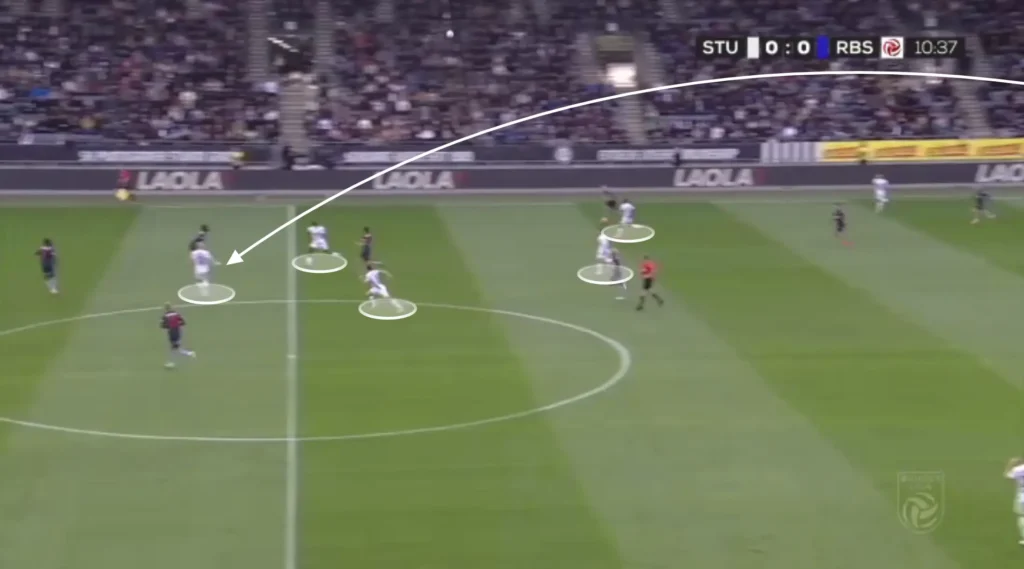
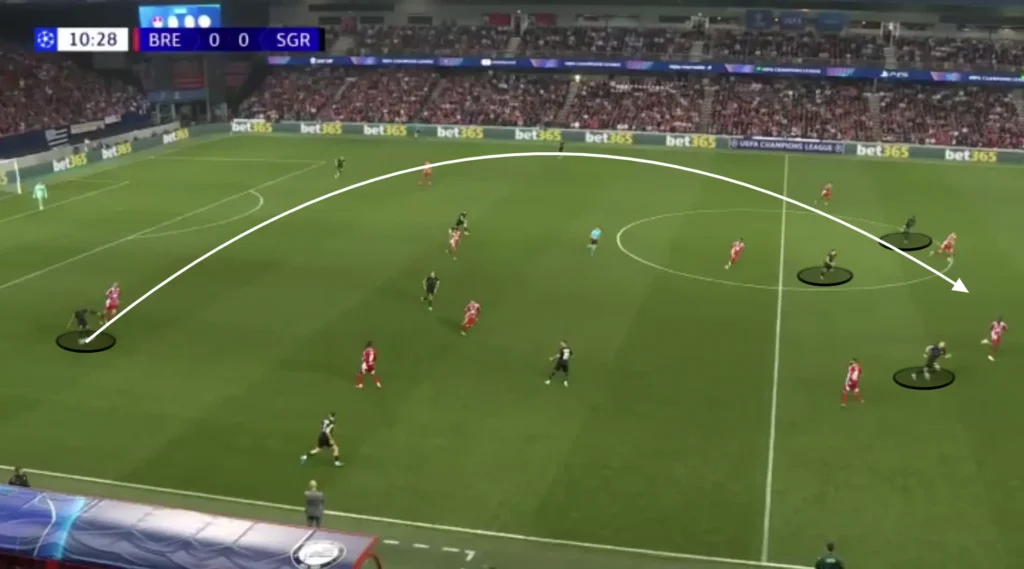
Additionally, inverting the wingers means Sturm Graz will have many players close together who can compete for the long balls. The front three will try to win the first ball, with the central midfielders positioning themselves close to be ready for the second ball.
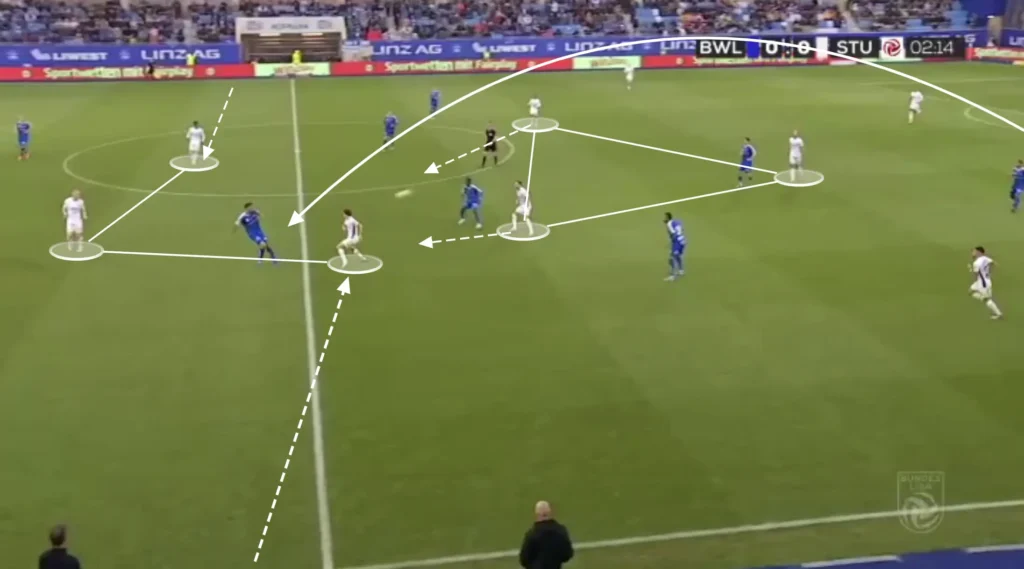
Final Third
Early Crosses
Sturm Graz utilize early crosses as a key offensive weapon, capitalizing on their wingers’ speed and the aerial presence of their forwards. By delivering the ball into the box before the opposition’s defense is fully set, they create quick and unexpected scoring opportunities. The early cross approach allows Sturm Graz to bypass congested midfields and exploit any gaps left by defenders still recovering their positions. The fullbacks are encouraged to push high up the pitch, often launching crosses from wide areas just outside the penalty box. This tactic puts pressure on opposing defenses and leverages the element of surprise, forcing opponents to defend in transition and increasing the likelihood of high-quality chances.
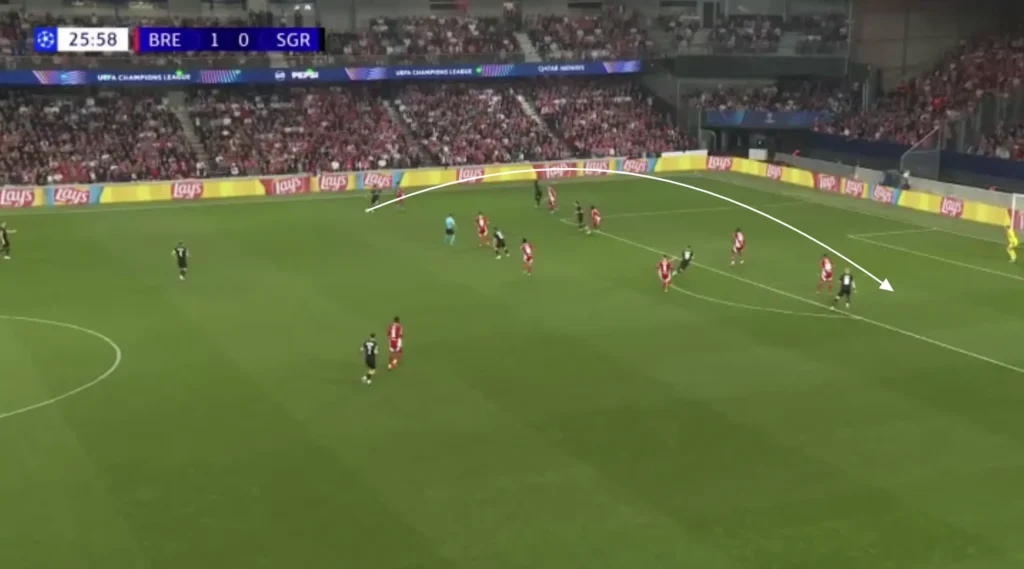
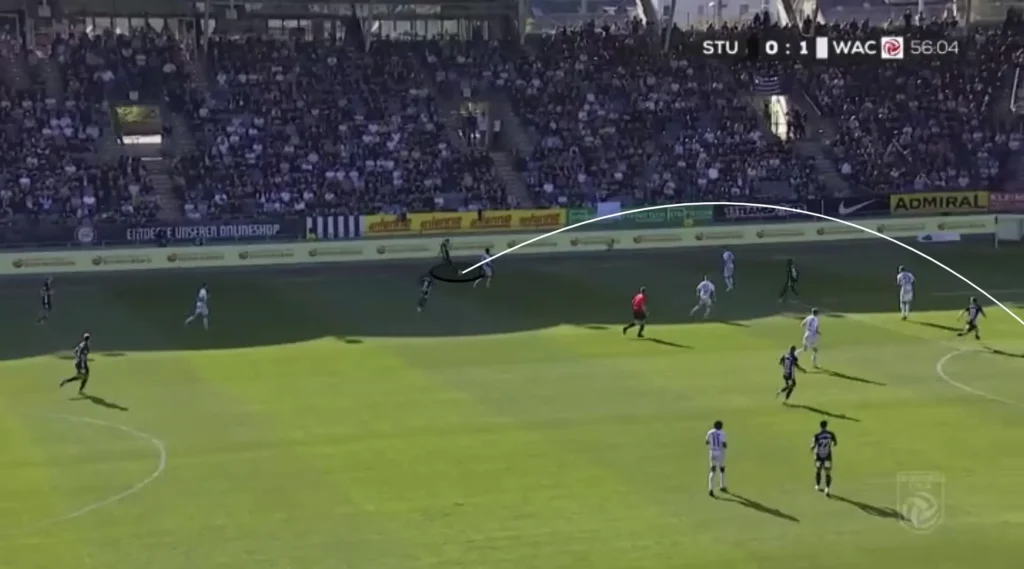
Many Players in the Box
The midfielders and wingers also look to make runs into the box when the ball is in the final third, often getting four or five players into these areas to create overloads. The numerical advantages in the box increase the chances of connecting with the cross, as more players present multiple targets for the crosser, making it harder for defenders to mark everyone effectively. Additionally, having multiple players in the box provides options for different types of finishes, whether it’s a header, volley, or a quick tap-in. It also allows for better positioning to react to second balls or rebounds, increasing the likelihood of capitalizing on any defensive errors.
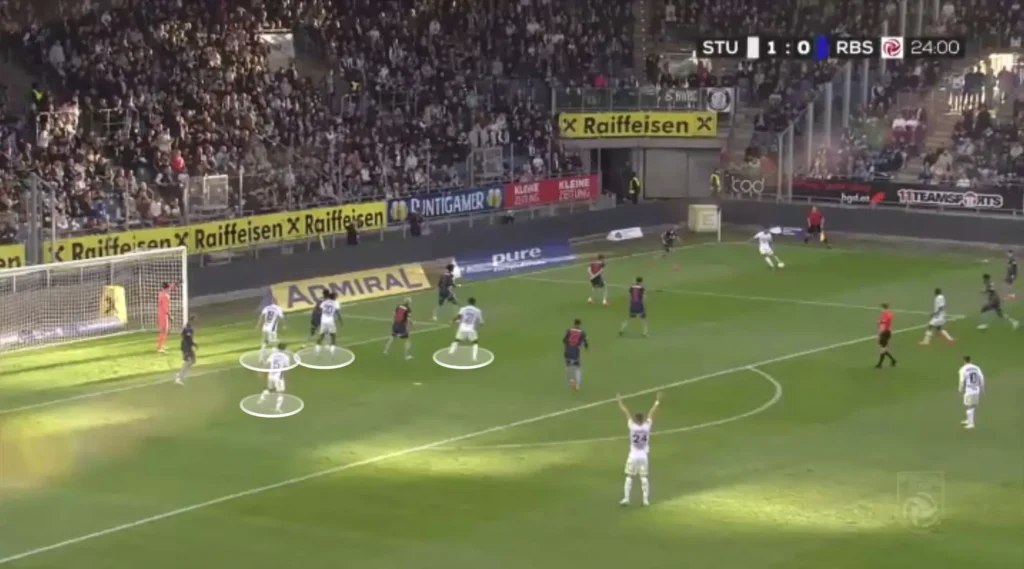
Ilzer also positions many players outside the box, ready for the second balls and cut-backs. Sturm Graz will often create crossing opportunities, which pushes down the opposition’s defense and opens the space in front of the opposition’s backline. The central midfielders can collect any loose balls or be found directly in these spaces with cut-backs, and from there, they can shoot or combine with an attacker to create goalscoring opportunities.
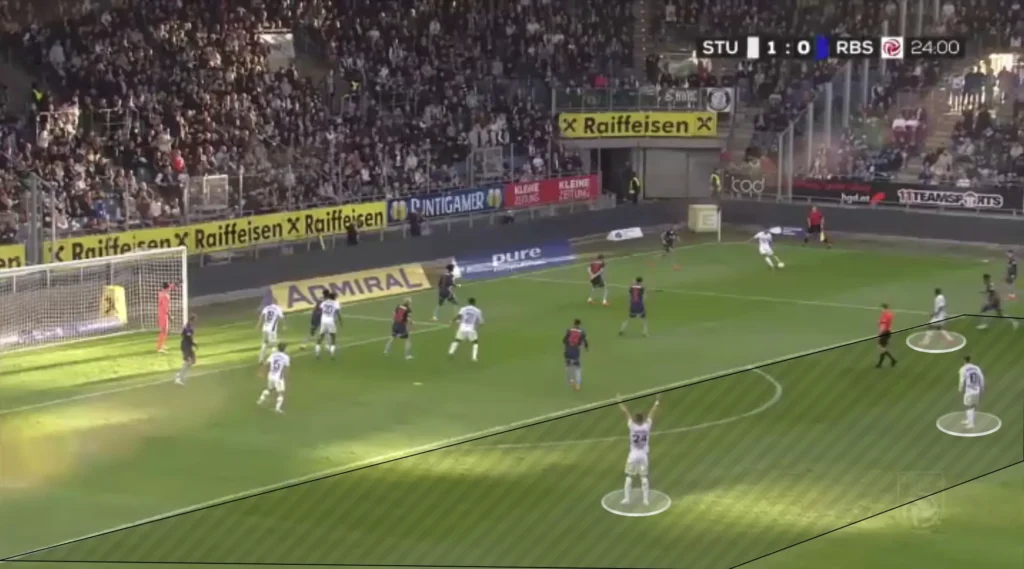
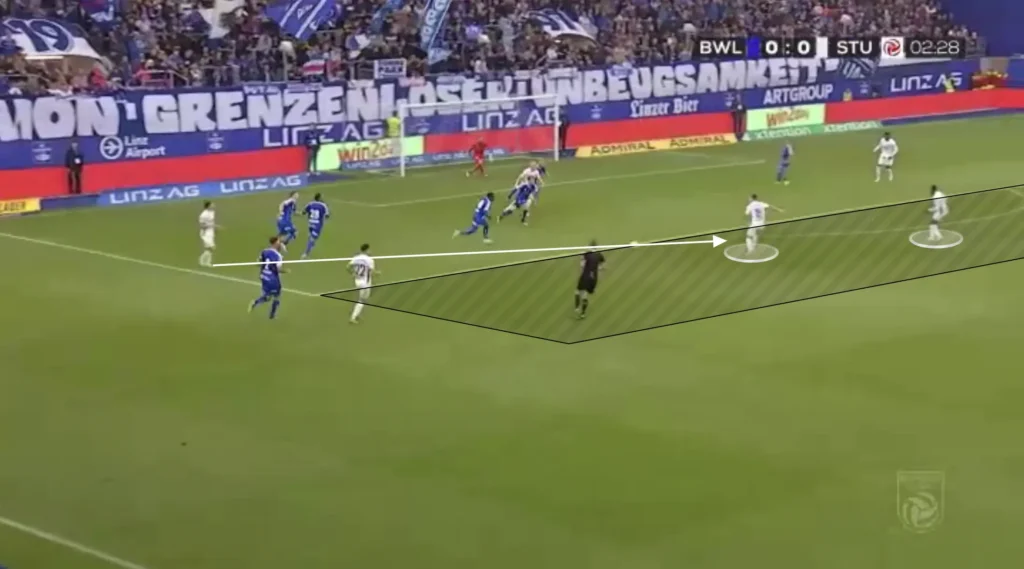
Defending
High Press
Sturm Graz usually look to press the opposition high up the pitch. Their pressing structure will depend on the opposition, but they primarily press in a 1-4-1-3-2 formation.
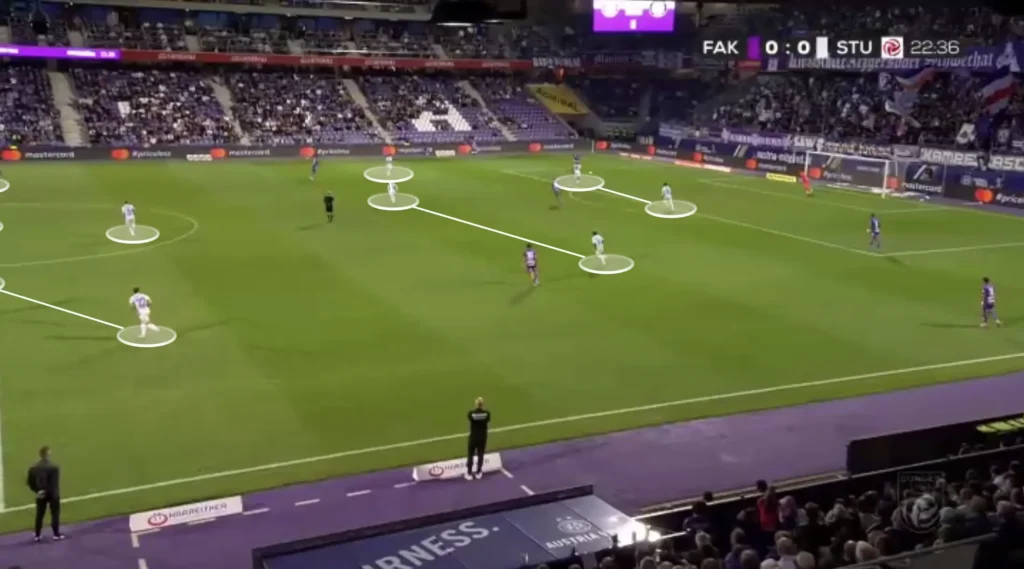
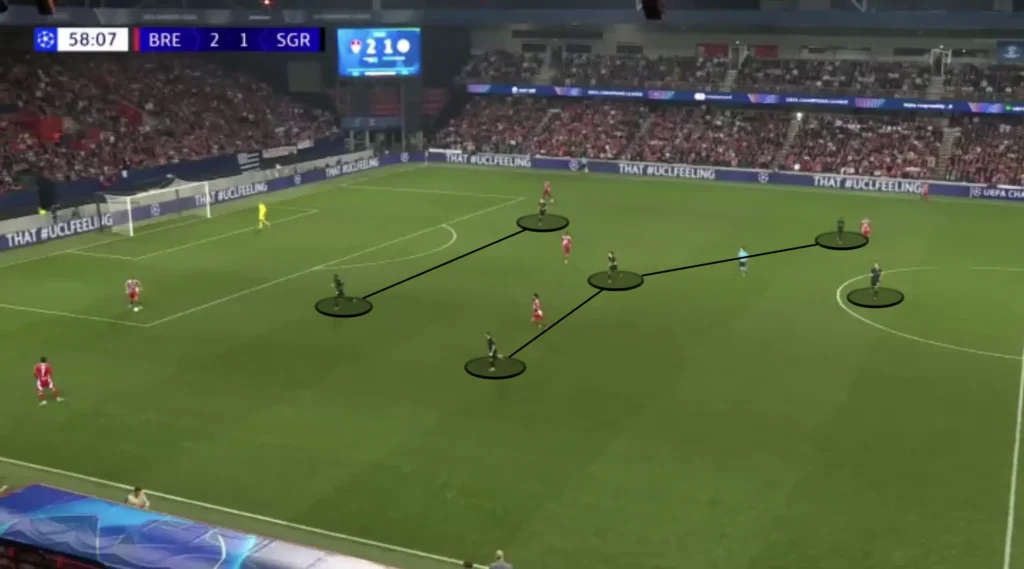
When the play starts, the strikers will try to close off one opposition center-back by making angled pressing runs, forcing the opposition to one side.
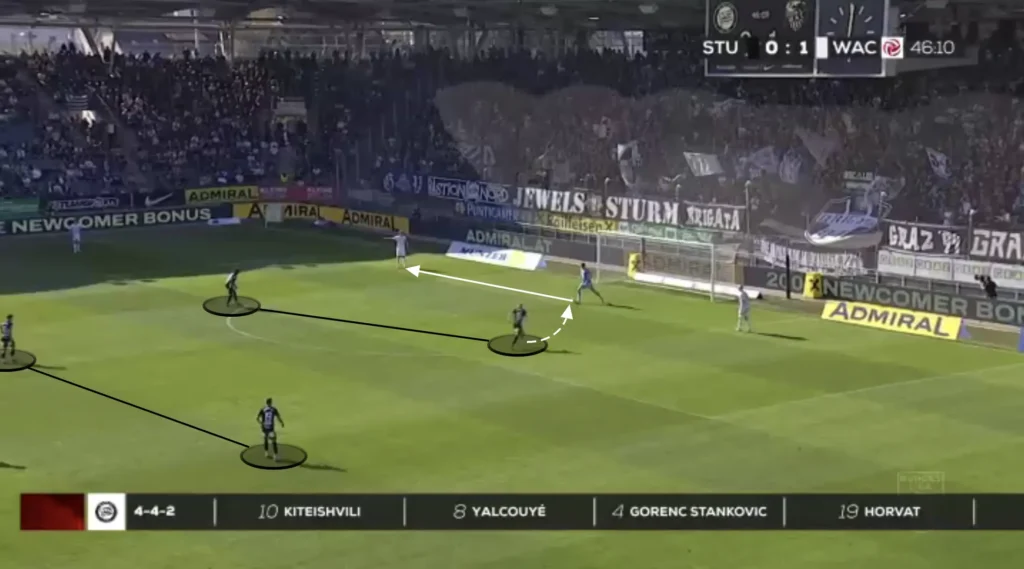
Sturm Graz will be extremely aggressive and intensely press to win the ball when it gets played out to one of the opposition fullbacks. The ball-side wide midfielder will push up on the ball-side fullback, with the rest of the midfield shifting across to close down any passing options.
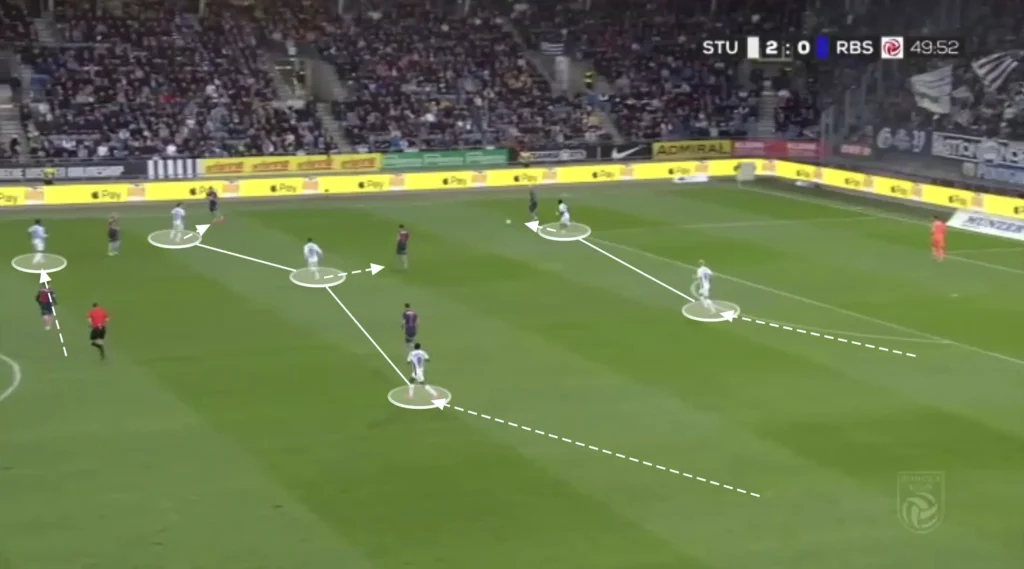
The wide midfielder will press from the inside, closing any passes into the middle. The ball-side striker will try to stop the opposition from switching sides by closing the pass to the ball-side center-back, while the Sturm Graz midfielders, who have shifted across, will push up on the opposition midfielders. This gives the opposition fullback very few passing options and often triggers a rushed long ball.
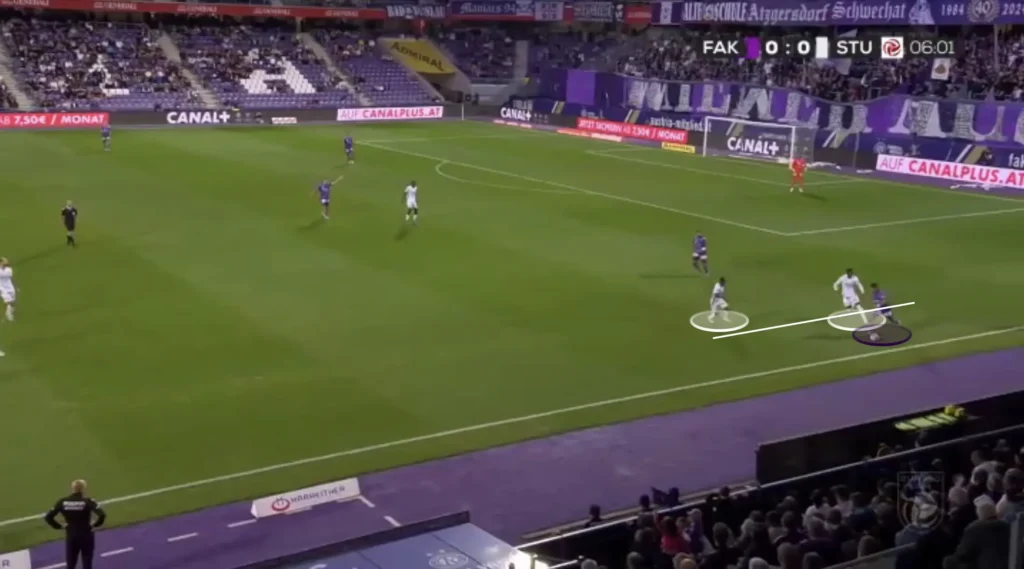
Additionally, this system gives the Sturm Graz backline a numerical advantage against the opposition attackers, which means they usually win the long balls.
When the Sturm Graz players win the ball in the high press, they are great at finding open spaces in the counterattacks. Instead of playing the ball straight forward where opposition defenders may still be positioned, they play a diagonal pass, allowing the team to bypass pressure and shift the play into open areas. From these areas, the Sturm Graz attackers can take the ball forward and combine with each other to quickly get past the opposition and create a goalscoring opportunity.

Low Press
Lower down the pitch, Ilzer usually sets his team up in a 1-4-4-2 formation. They look to set up in a mid-block, always trying to close the center and force the opposition out wide.
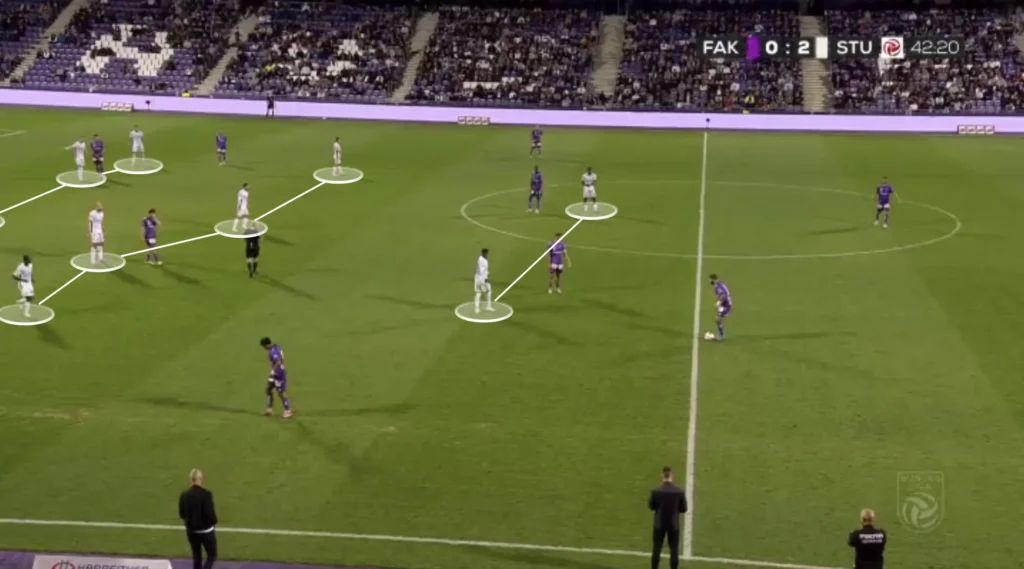
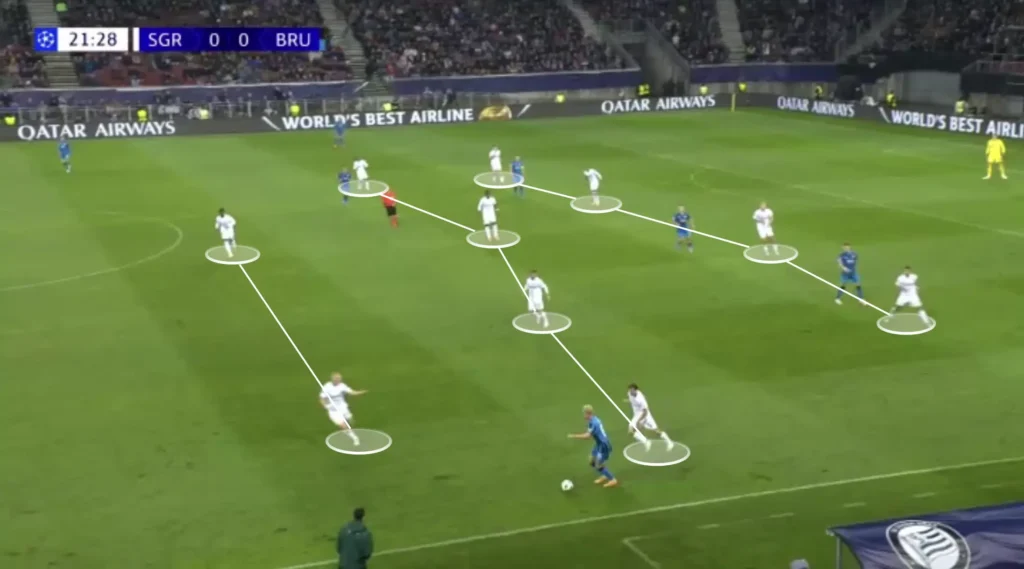
Defending in the 1-4-4-2 formation is all about balance, compactness, and discipline. The team defends in two compact lines of four, with the forwards positioned ahead of the midfield. The two forwards play a crucial role, not only as the first line of defense but also in initiating the team’s pressing strategy. Ilzer wants his team to stay compact without dropping too low, preferably closing the space between the midfield and backline.
Sometimes, one of the strikers drops down into a number-ten position, creating a 1-4-4-1-1 formation.

This shape can offer more defensive stability, as the deeper forward helps to close down passing lanes and disrupt the opponent’s build-up play, particularly in central areas. The single forward at the top can then focus more on cutting off passes between center-backs, rather than splitting responsibilities with a second striker. On the other hand, a 1-4-4-2 typically features two strikers who can press in tandem, which can be effective for teams aiming to disrupt the opponent’s build-up higher up the pitch.
Final Thoughts
In conclusion, Christian Ilzer has built a tactically astute and well-balanced Sturm Graz side that excels in both organization and intensity. His emphasis on a fluid and pressing game, combined with a solid defensive structure, has shaped the team into one that can effectively compete against various styles of play.
Ilzer’s tactical flexibility, whether through a high press, disciplined mid-block, or swift counterattacks, demonstrates his deep understanding of the game and his ability to adapt strategies to his players’ strengths. As Sturm Graz continues to develop under his guidance, Ilzer’s tactical acumen will be crucial in helping the team reach new heights. Fans and analysts alike can look forward to a compelling season, with Sturm Graz poised to be a challenging opponent for any team they face.
